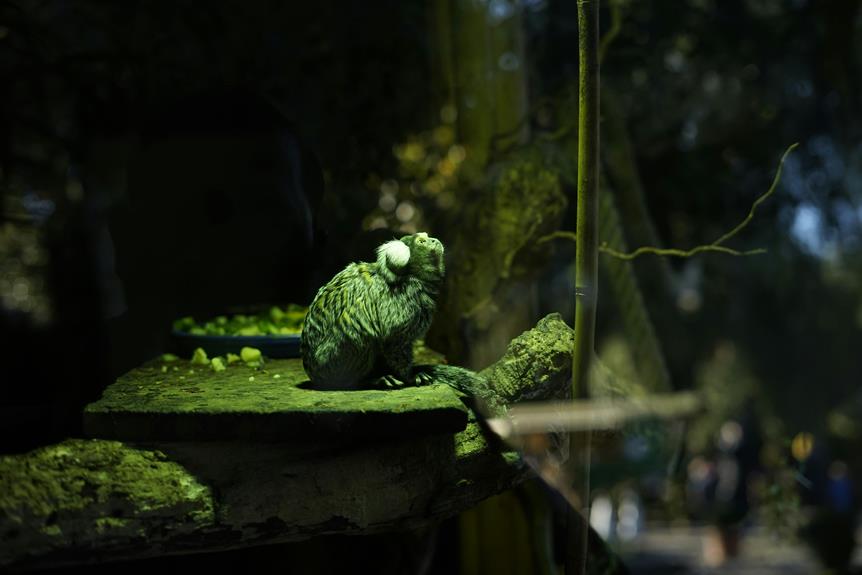When you observe gossamer in varying lighting conditions, you can't help but notice how dramatically its appearance changes. In natural sunlight, the delicate threads take on a captivating glow, while twilight casts a softer ambiance that emphasizes depth and mystery. Under artificial lights, however, the results can be quite mixed, with certain bulbs dulling its luster. So, how do these variations influence your perception of gossamer's textures and colors? Understanding these subtleties might just enhance your appreciation for its unique properties.
Table of Contents
Gossamer in Natural Sunlight
When you observe gossamer in natural sunlight, its delicate threads shimmer with an otherworldly glow that captivates the eye. The interplay of light and shadow reveals intricate patterns woven by nature, showcasing the material's ethereal beauty. Sunlight enhances the gossamer's translucence, allowing you to appreciate the fine details that often go unnoticed.
In this brilliant illumination, gossamer displays a remarkable ability to reflect and refract light, creating a spectrum of colors. As the sun angles change throughout the day, you'll notice how gossamer adapts, shifting hues and intensity. The warm rays can transform these fragile threads into strands of gold, drawing your attention to their wispy elegance.
Moreover, the surrounding environment complements this visual feast. The lush greens of foliage or the vibrant blues of the sky magnify gossamer's enchanting appeal. You might even find yourself drawn closer, wanting to touch its light, airy texture, yet aware of its fragility.
Sunlight acts not only as a spotlight but as a storyteller, portraying each glimmering thread in a harmonious dance that connects you with nature's artistry.
Effects of Twilight on Gossamer
As twilight descends, gossamer takes on a hauntingly beautiful quality, with its delicate threads becoming more pronounced against the deepening hues of dusk. You may find that the colors of the sky—shades of purple, pink, and blue—create a striking backdrop that enhances the subtle elegance of gossamer. In this dimming light, the fine, silky strands capture the ambient glow, reflecting it in a way that almost seems magical.
As the sun sets, the gentle shadows emerge, providing a soft contrast that further highlights gossamer's ethereal nature. You might notice how the textures and patterns of the threads stand out more vividly, creating a visual tapestry that shifts with each breath of wind. Observing gossamer in twilight can evoke a sense of peace and wonder, inviting you to appreciate nature's intricate details.
Just remember, the fading light can also make the fragile strands harder to see. If you're seeking to fully appreciate gossamer's beauty, positioning yourself to catch the last rays of sunlight before dusk truly takes over can yield the most stunning displays.
Ultimately, twilight transforms gossamer into an enchanting spectacle that captivates the senses.
Performance Under Artificial Lighting
How does gossamer perform under artificial lighting, and what effects does this setting have on its intricate beauty?
When you expose gossamer to artificial light, you'll often notice a striking difference in its appearance compared to natural light. The crispness of its delicate threads typically becomes enhanced, emphasizing the intricate patterns you might overlook during daylight.
However, not all artificial lighting is equal. Fluorescent lights tend to cast a cool hue, which can sometimes dull gossamer's natural brilliance. On the other hand, warm incandescent lights can create a cozy atmosphere that brings out the softness and richness of the gossamer, making it appear more inviting and beautiful.
If you're photographing or displaying gossamer, experiment with various artificial lighting setups. Direct light can create harsh shadows, while diffused light softens edges and highlights texture. Avoiding overly bright conditions will help retain the subtleties in gossamer's appearance.
Ultimately, understanding the characteristics of artificial lighting allows you to showcase gossamer's beauty more effectively, revealing layers of detail that can transform how you perceive and appreciate this exquisite material.
Gossamer and Color Perception
Gossamer can dramatically alter color perception, making hues appear more vibrant or muted depending on the light and background it interacts with.
When you combine gossamer with different lighting sources, you'll notice how the material affects the color's intensity. In bright, natural light, for instance, gossamer enhances the saturation of colors, giving them a lively and appealing character. Conversely, in dim or artificial light, it might soften those same colors, creating a more subdued palette.
Your surroundings also play a crucial role in this interaction. If you place gossamer against a dark backdrop, the colors might pop and look rich. On the other hand, when paired with lighter backgrounds, the colors could blend and appear more pastel-like.
Understanding how gossamer influences the perception of color can be beneficial. It allows you to make informed choices in settings where aesthetics matter, like staging or displaying textiles.
Applications in Art and Design
In the realm of art and design, gossamer brings a unique versatility that can transform ordinary spaces into mesmerizing visual experiences. When you utilize this delicate material, you can create ethereal environments that evoke joy, tranquility, or even nostalgia. Whether you're designing an immersive art installation or a cozy home setting, gossamer adds depth and sophistication to your projects.
Here's a glimpse of how gossamer can impact your artistic endeavors:
| Emotion | Application |
|---|---|
| Awe | Dramatic backdrops for theatrical performances |
| Serenity | Soft partitions in meditation spaces |
| Whimsy | Playful accents in children's rooms |
| Grandeur | Elegant drapes for weddings and celebrations |
Frequently Asked Questions
How Does Humidity Affect Gossamer's Performance in Lighting?
Humidity affects gossamer's performance by influencing its texture and pliability. You'll notice changes in how it interacts with light, making it important to consider humidity levels when working with gossamer in your projects.
Can Gossamer Be Used in Outdoor Installations Year-Round?
Yes, you can definitely use gossamer in outdoor installations year-round. Its durability and flexibility allow it to withstand various weather conditions, making it a versatile choice for all seasons without compromising performance or aesthetics.
What Materials Enhance Gossamer's Properties in Varying Light?
To enhance gossamer's properties in varying light, consider materials like Iridescent films or lightweight reflective fabrics. They boost translucency and create striking effects, elevating your installations' overall aesthetic while ensuring durability and flexibility during changes.
How Does Gossamer Interact With Different Wavelengths of Light?
When you explore gossamer's interaction with various wavelengths of light, you'll notice it absorbs some frequencies while reflecting others. This unique behavior enhances its versatility, allowing it to adapt and perform differently across the spectrum.
Are There Maintenance Tips for Gossamer Exposed to Sunlight?
To keep gossamer in great shape under sunlight, you should regularly inspect it for wear and tear, clean it gently to remove dust, and consider using UV protection to extend its lifespan and prevent fading.
- How Does Ring Spun Cotton Affect Garment Fit and Shape Retention? - August 13, 2024
- What Are the Challenges in Producing Ring Spun Cotton? - August 13, 2024
- Is Ring Spun Cotton Suitable for Plus-Size Clothing? - August 13, 2024






